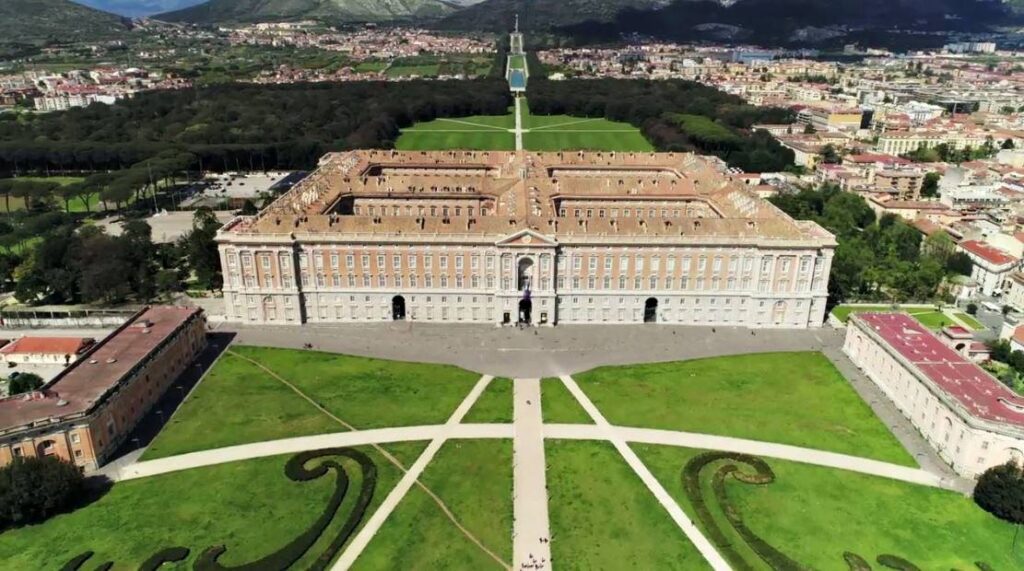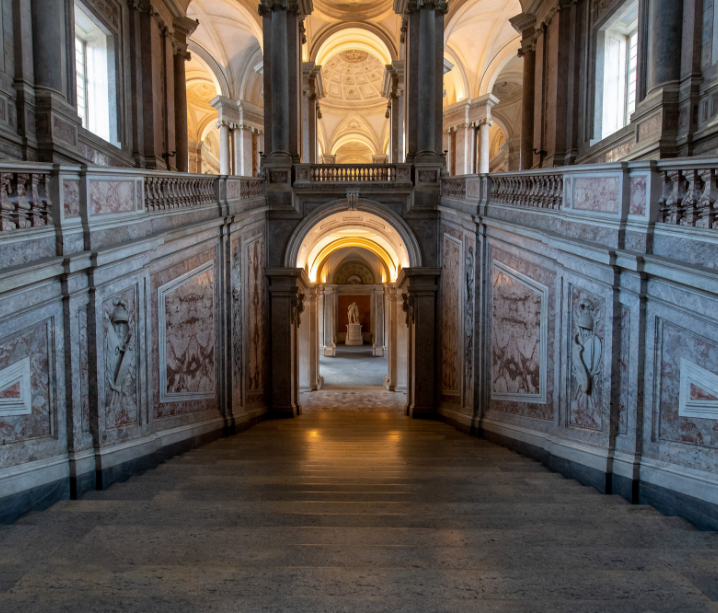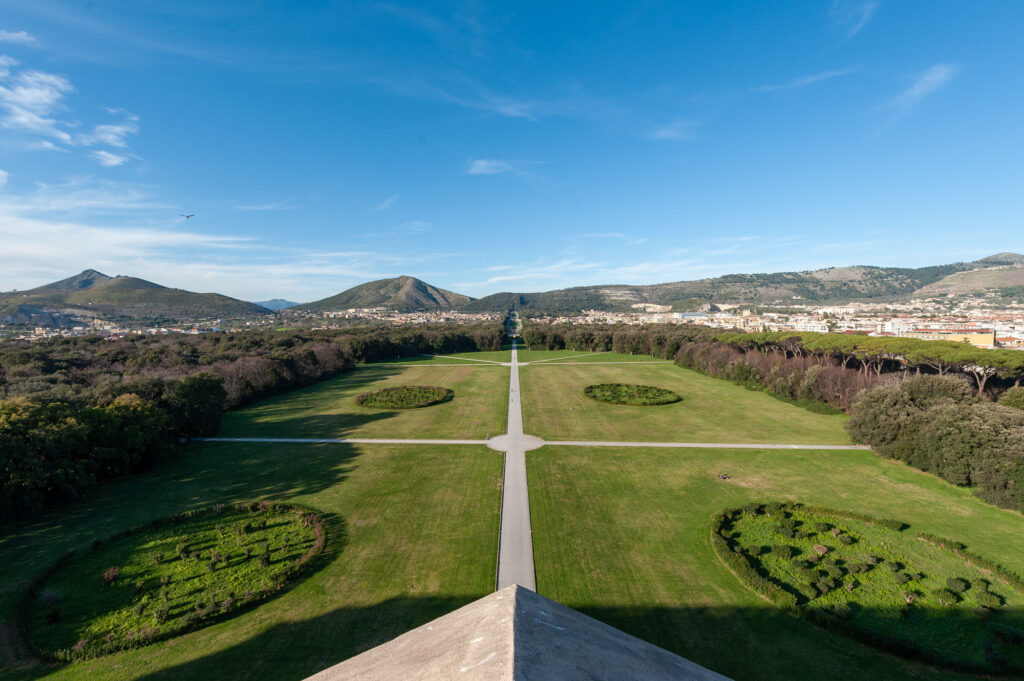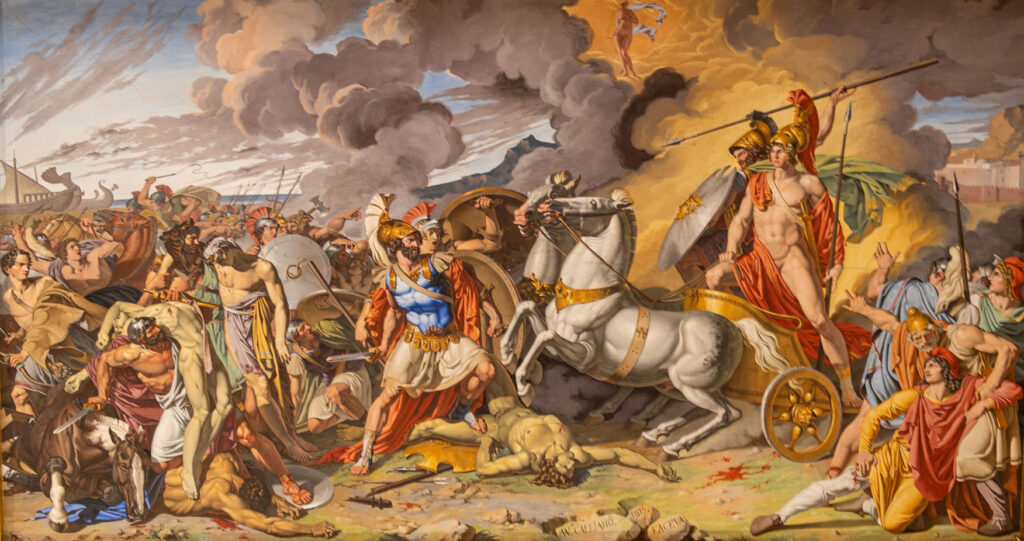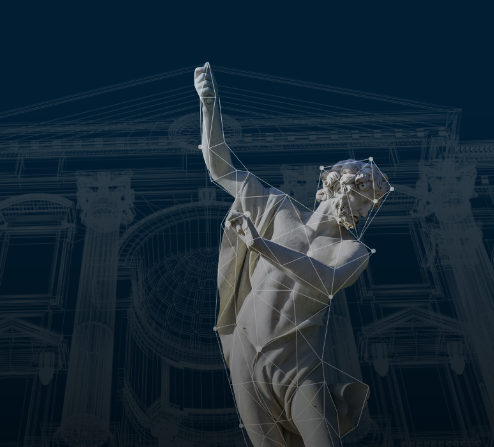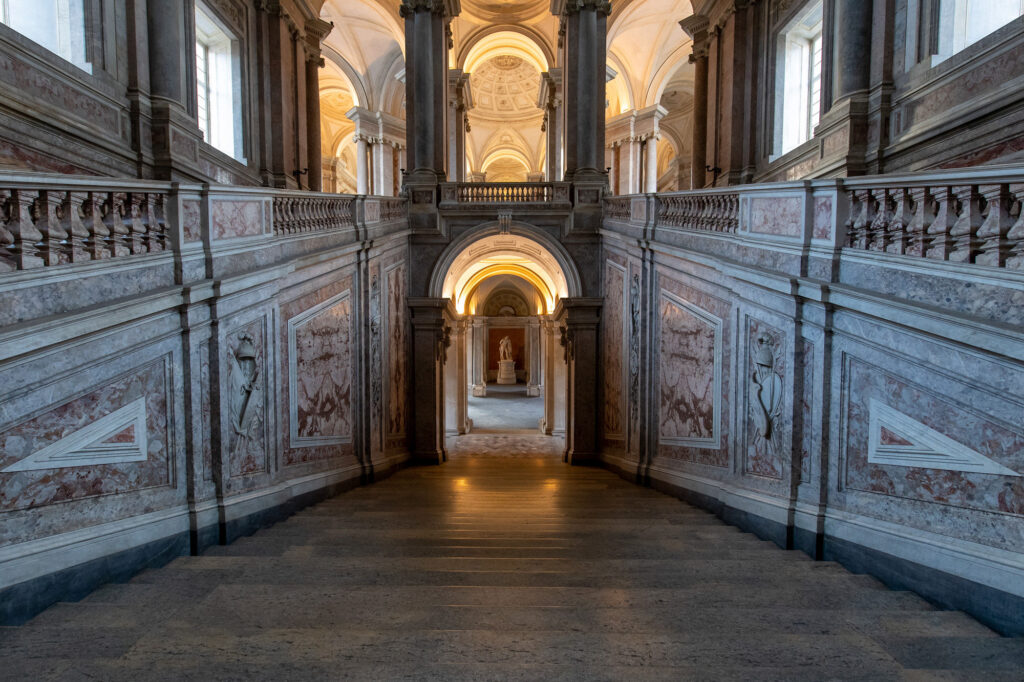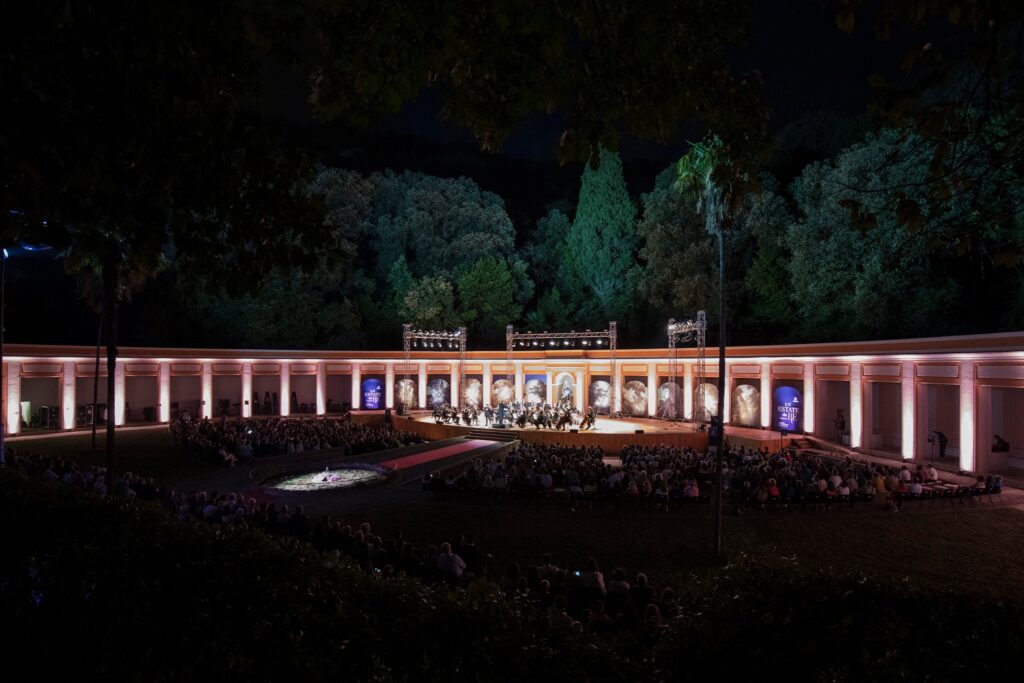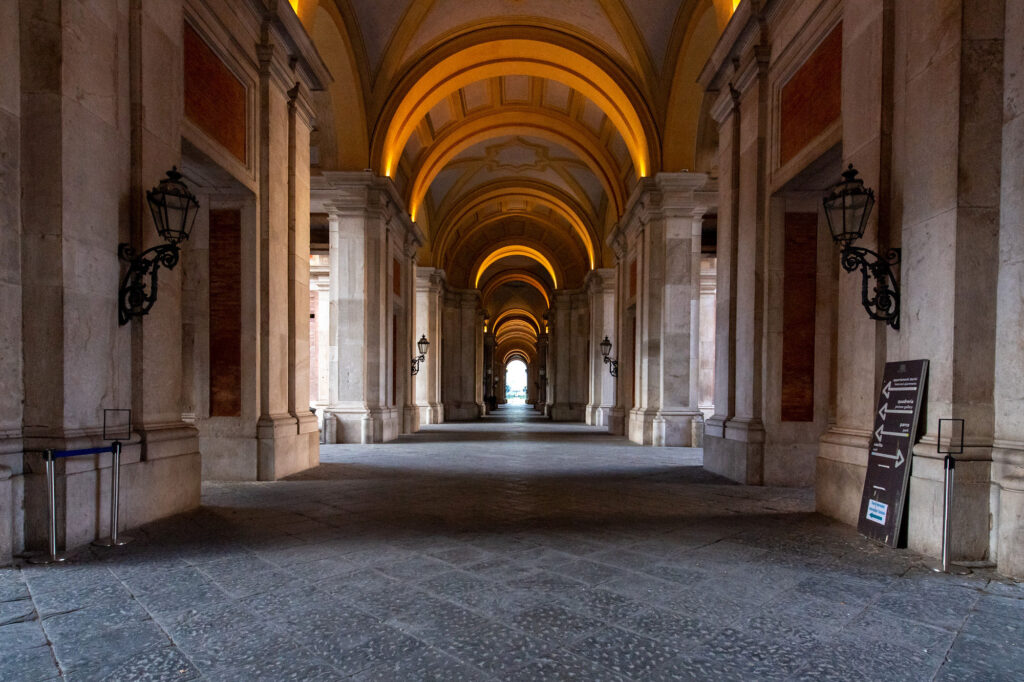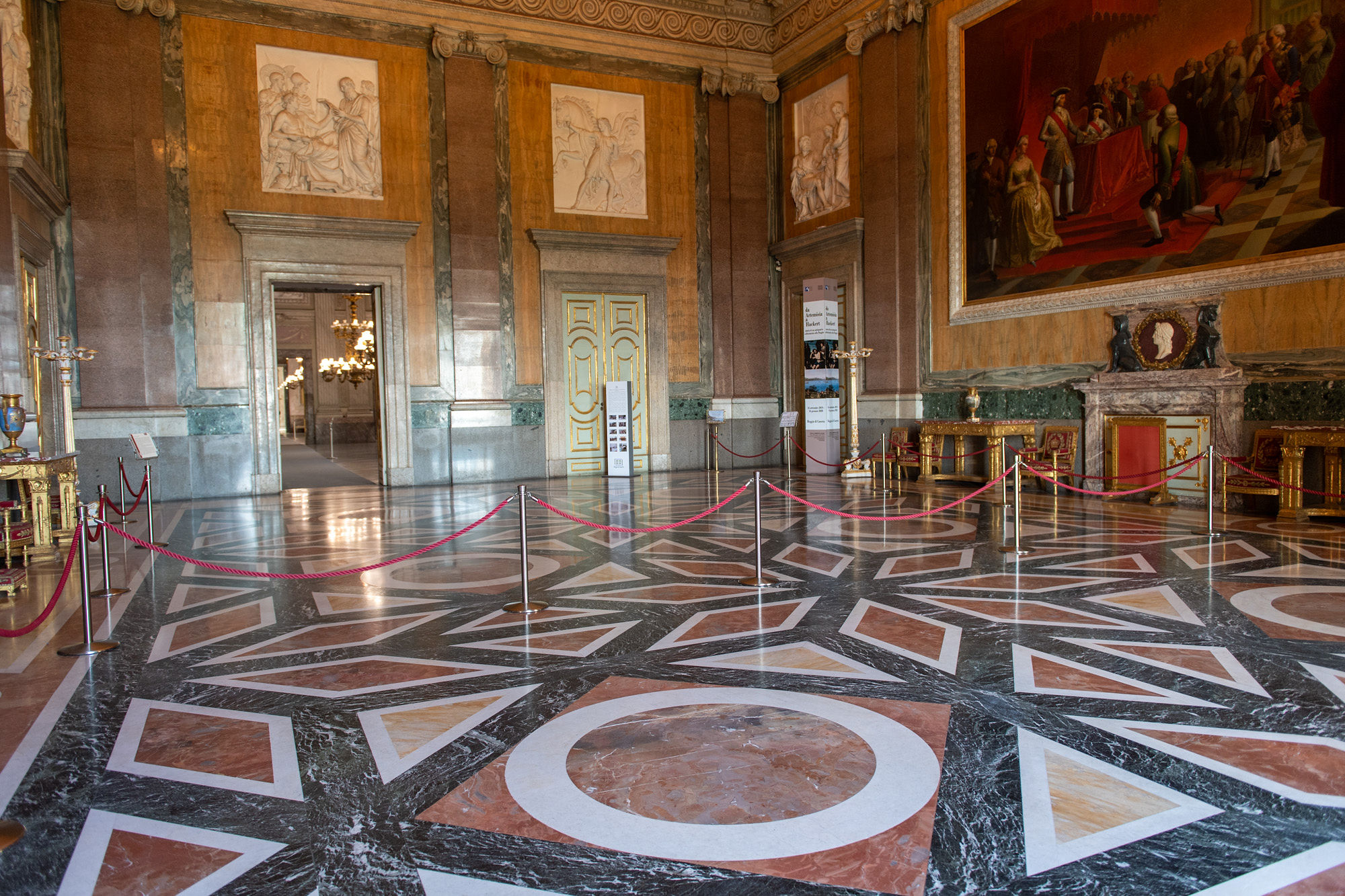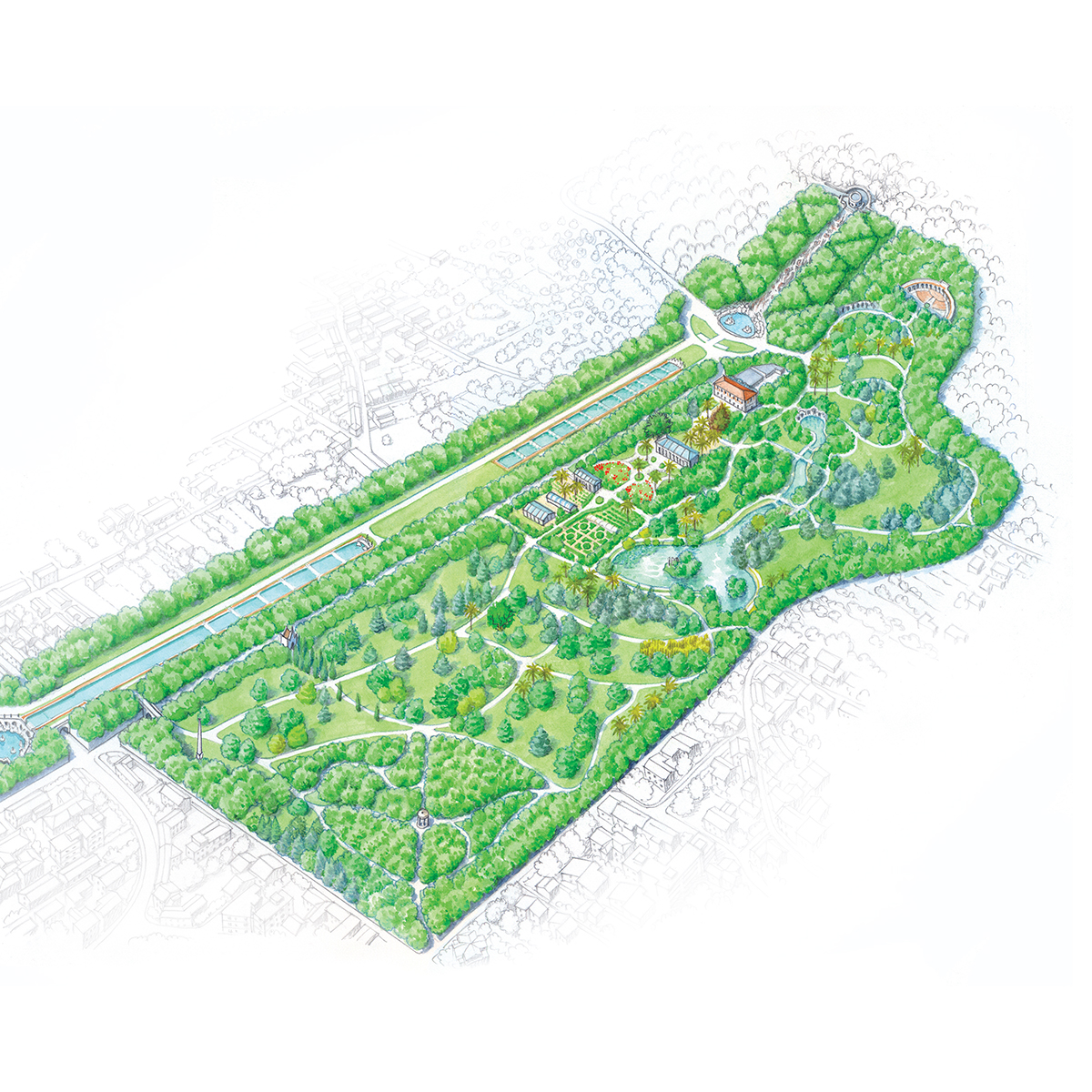Joachim Murat’s Throne Hall
At the exact centre of the Royal Palace’s south facade there is Alexander Hall, dedicated to Alexander the Great, whom Charles of Bourbon was inspired by. The leader is celebrated in the grandiose fresco on the vault with Mariano Rossi’s artwork titled The marriage of Alexander the Macedonian and Roxane (1787).
The Alexander Hall is perhaps the place that underwent the biggest number of political transformations of the whole Kingdom of Naples.
Fulcrum of the private life of the Palace in the early nineteenth century while used as a dining room by the royal family, it was converted into a throne room during the French domination. It was later decorated with bas-reliefs and paintings that exalted the exploits of Joachim Murat. Upon the return of the Bourbons, any reference to the Murats was removed and replaced with the decorations we see today.
The gilded wood thrones, the only testimony of the Napoleonic period, are among the finest pieces of the Royal Palace of Caserta’s furniture collection.

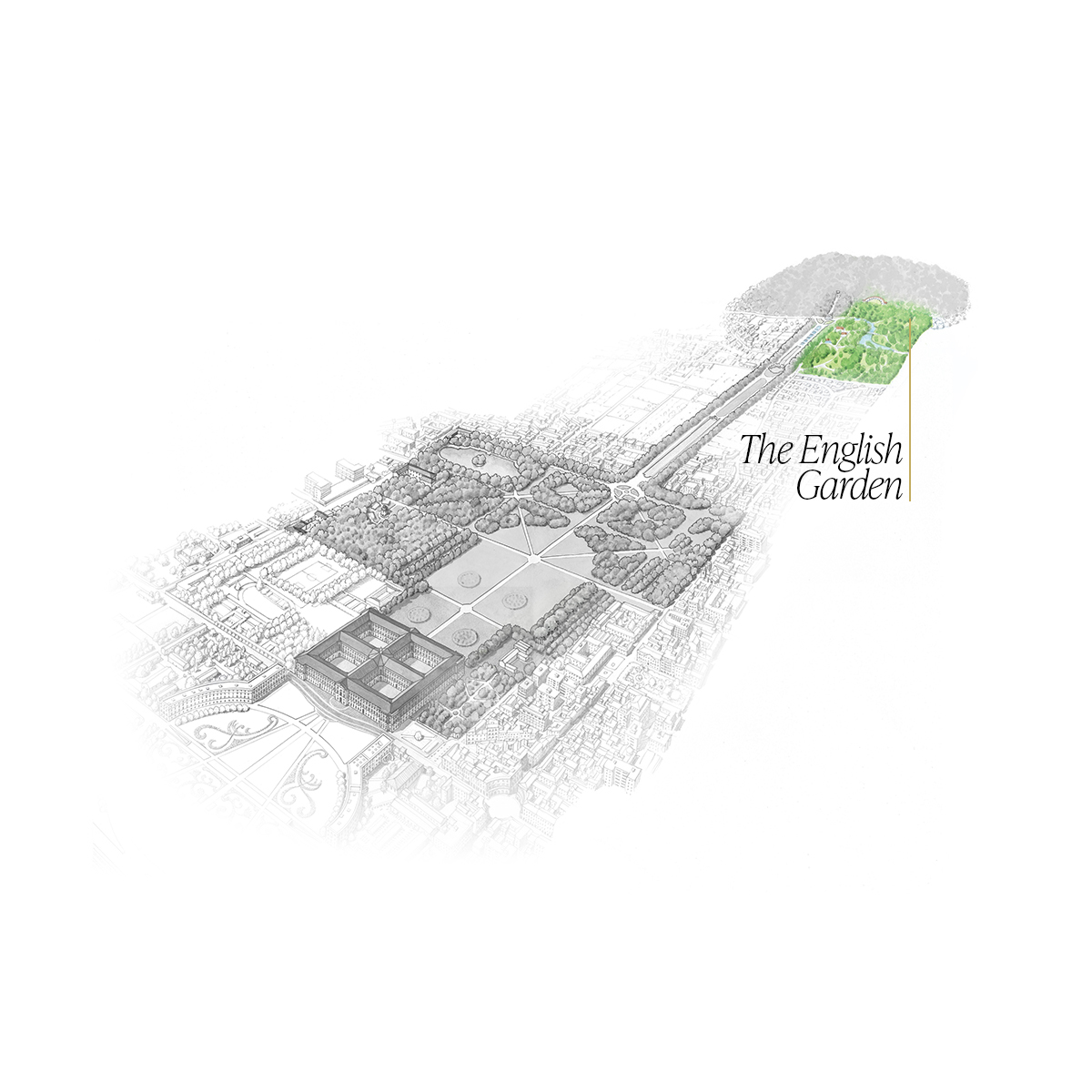
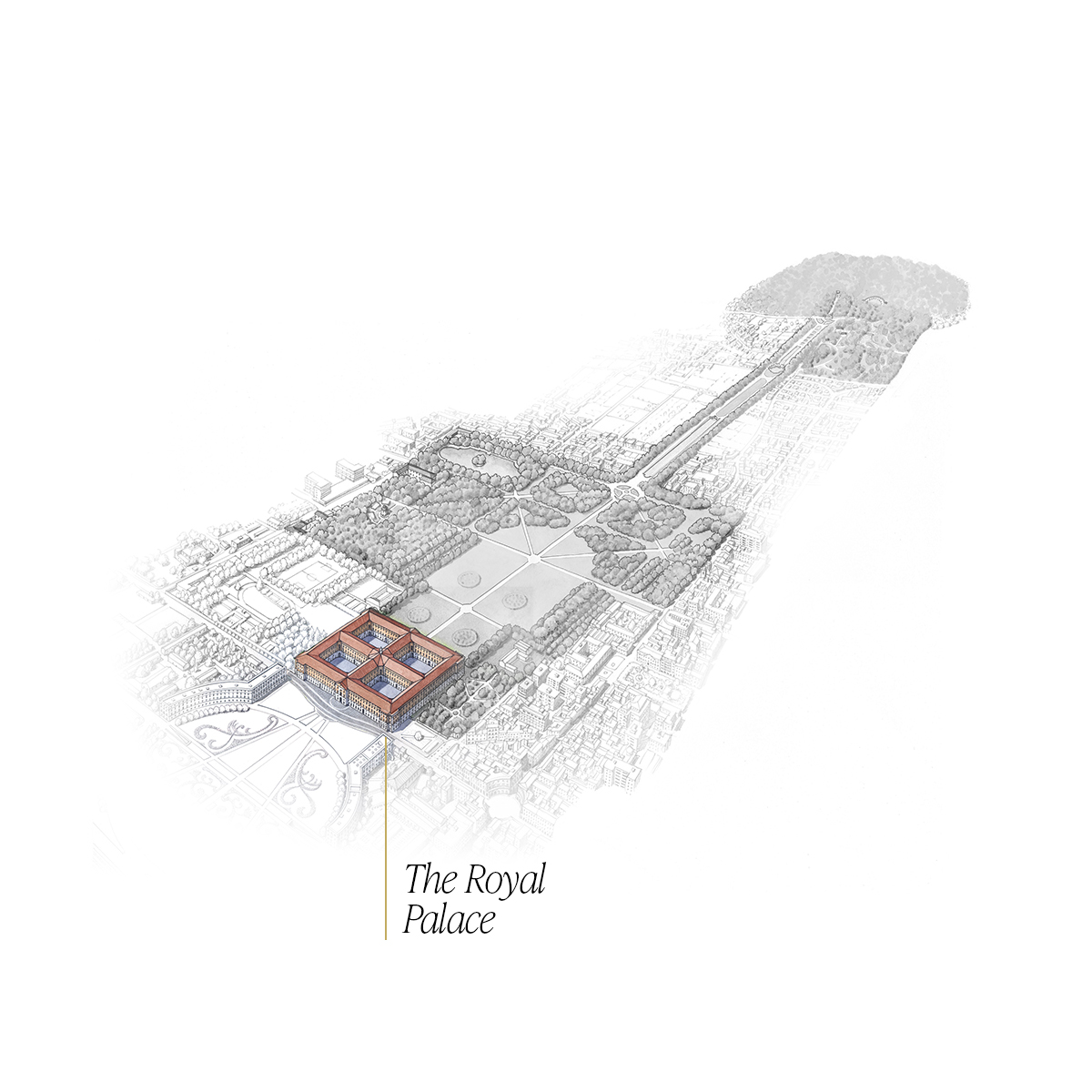
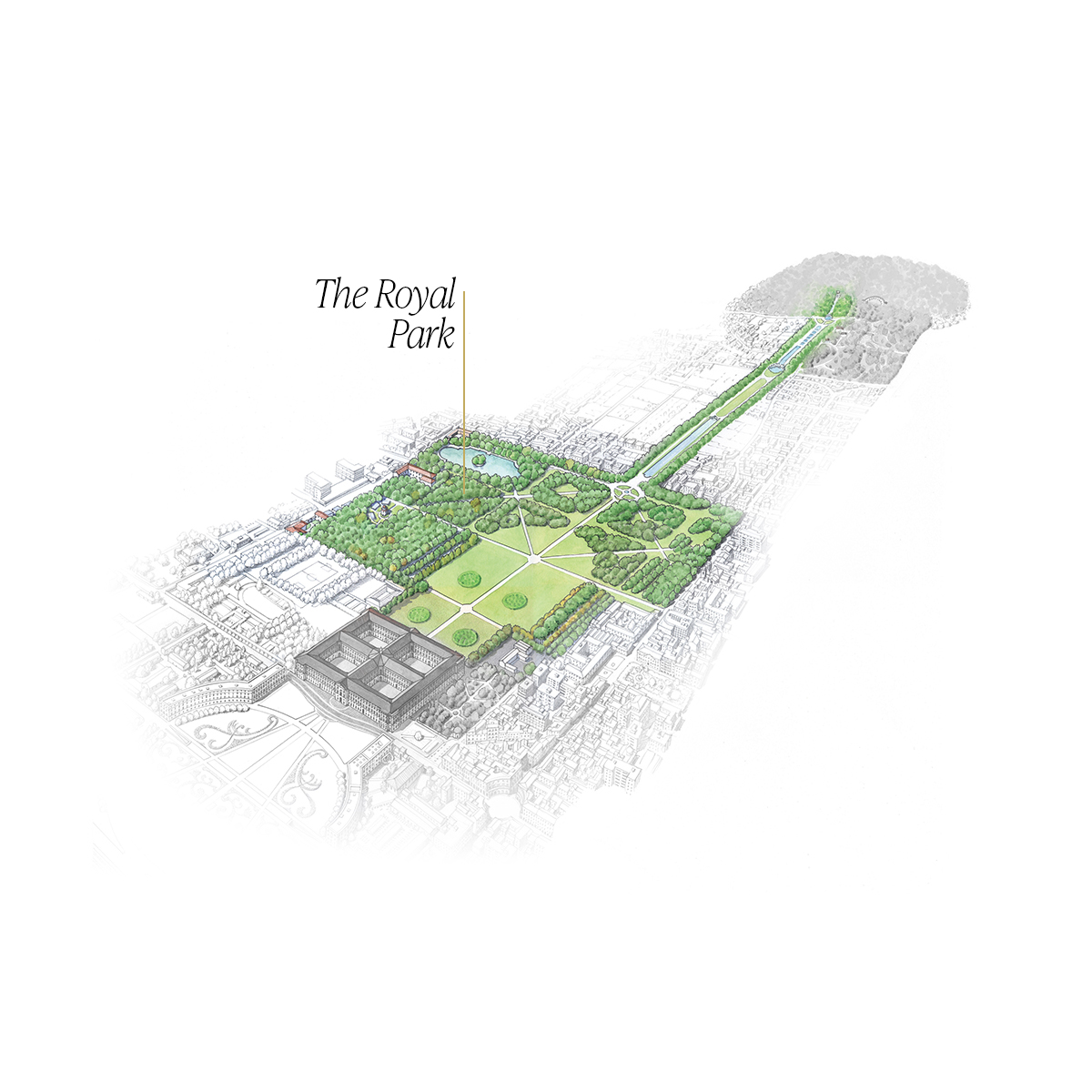

 Via d'acqua
Via d'acqua Castelluccia
Castelluccia Peschiera
Peschiera The Fountain of Dolphins
The Fountain of Dolphins The Fountain of Aeolus
The Fountain of Aeolus The Fountain of Ceres
The Fountain of Ceres The Fountain of Diana and Actaeon
The Fountain of Diana and Actaeon The Fountain of Venus and Adonis
The Fountain of Venus and Adonis The waterfall and Torrione
The waterfall and Torrione The Bosco Vecchio (Old Wood)
The Bosco Vecchio (Old Wood) The Margherita Fountain
The Margherita Fountain





